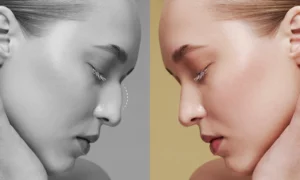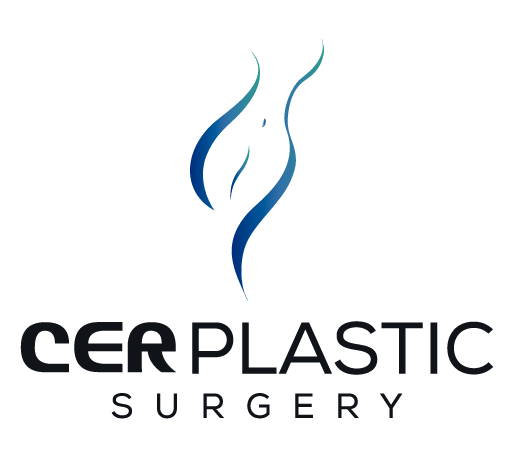Rhinoplasty in Mexico
If you’re considering Rhinoplasty, also known as a nose job, you’re not alone. Rhinoplasty is one of the most sought-after cosmetic surgeries globally, and for good reason. It offers the promise of enhancing not just your appearance but also your self-confidence and overall well-being.
Cost Comparison: USA vs. Mexico
How much does Rhinoplasty cost in Mexico?
The Nose Job cost varies significantly based on multiple factors, including the surgeon’s experience, the complexity of the procedure, and geographic location. Here’s a rough cost comparison between the USA and Mexico:
- USA: Rhinoplasty in the United States can range from $5,000 to $15,000 or more, depending on the aforementioned factors.
- Mexico: Rhinoplasty in Mexico typically costs between $2,000 and $5,000, offering a substantial cost advantage without compromising on quality.
What Makes Rhinoplasty in Mexico Stand Out?
Rhinoplasty surgery (nasal surgery) in Mexico has gained recognition for several compelling reasons:
- One of the most significant advantages of choosing Mexico for rhinoplasty is cost savings. The procedure can often be more budget-friendly in Mexico compared to the United States, making it accessible to a broader range of individuals seeking aesthetic improvements.
- Experienced Surgeons: Mexico boasts a pool of highly skilled and experienced plastic surgeons who are well-versed in the art of rhinoplasty. Many surgeons in Mexico have received training and certifications from renowned institutions, ensuring a high standard of care.
- State-of-the-Art Facilities: Top-notch medical facilities in Mexico offer modern equipment, sterile environments, and a commitment to patient safety that rivals those in the United States.
- Privacy and Recovery: Mexico’s serene and picturesque locations provide a tranquil backdrop for post-operative recovery. Patients can recuperate in peace while enjoying the beauty of the country.
What Are the Potential Risks of Rhinoplasty?
Rhinoplasty carries certain inherent risks and potential complications, regardless of the location where surgeons perform it, as with any surgical procedure. These risks include:
- Infection: While infections are relatively rare, they can occur after surgery. Strict adherence to post-operative care instructions can mitigate this risk.
- Swelling and Bruising: Swelling and bruising are common after rhinoplasty but are usually temporary and subside over time.
- Anesthesia Complications: There is a slight risk of complications related to anesthesia, although these are generally uncommon.
- Despite the surgeon’s best efforts, there is a possibility that the final results may not meet your expectations.
Procedure: What Does Rhinoplasty Entail?
Rhinoplasty is a complex surgical procedure that involves reshaping and recontouring the nose to achieve the desired aesthetic and functional outcomes. The process typically includes the following steps:
- Consultation: Before the nose surgery, you will have an in-depth consultation with your plastic surgeon. During this meeting, you’ll discuss your goals, concerns, and expectations for the procedure.
- The surgeon administers either general or local anesthesia with sedation during Rhinoplasty to ensure your comfort throughout the surgery.
- During Rhinoplasty, the surgeon administers either general or local anesthesia with sedation to ensure your comfort throughout the surgery.
- Reshaping: The surgeon will then reshape the nasal bone and cartilage to achieve the desired appearance. This may involve removing or adding tissue, straightening a deviated septum, or modifying the nasal tip.
- Finally, the surgeon closes the incisions with sutures and applies nasal splints and dressings to support the healing process.
Who Is a Good Candidate for Rhinoplasty?
While the decision to undergo Rhinoplasty is highly personal, certain qualities make someone an ideal candidate for the procedure:
- Good Physical Health: Candidates should be in overall good health, with no underlying medical conditions that may pose risks during surgery or hinder the healing process.
- Emotional Stability: Emotional and psychological well-being is essential. Candidates should have realistic expectations and a clear understanding of the procedure’s limitations.
- Clear Goals: Having specific and achievable goals for the surgery is crucial. Whether it’s correcting
- a nasal deformity, improving breathing, or enhancing aesthetics, clarity about desired outcomes is important.
- Non-smoker: Smoking can impair the healing process and increase the risk of complications. Surgeons often advise candidates to quit smoking before and after the procedure.
- Aging Considerations: Candidates should ideally reach their mid-teens because surgeons typically do not perform Rhinoplasty on individuals whose facial growth has not yet been completed.

What Are the Different Rhinoplasty Techniques?
Rhinoplasty, often referred to as a “nose job” encompasses several different techniques that plastic surgeons use to achieve various aesthetic and functional goals. The choice of technique depends on the patient’s specific needs and desired outcome. Here are the different Rhinoplasty techniques:
Open Rhinoplasty
- Incision: In open Rhinoplasty, the surgeon makes an incision across the columella, the strip of tissue that separates the nostrils. This approach provides better visibility and access to the underlying nasal structures.
- Advantages: It allows for precise and comprehensive reshaping of the nose, making it suitable for complex cases. Surgeons can visualize the nasal framework and make detailed adjustments.
- Open Rhinoplasty typically results in a small external scar on the columella, but it’s usually inconspicuous when fully healed.
Closed Rhinoplasty
- In closed Rhinoplasty, the surgeon makes all incisions inside the nostrils. Surgeons sometimes refer to this technique as endonasal Rhinoplasty.
- Advantages of closed Rhinoplasty include avoiding external scarring, as it hides all incisions inside the nose. Recovery is often faster compared to open rhinoplasty.
- It may have limitations in terms of visibility and access for complex surgical adjustments. Closed Rhinoplasty is generally more suitable for less extensive changes.
Reduction Rhinoplasty
- Purpose: Surgeons perform reduction rhinoplasty to reduce the size and shape of the nose.
- Technique: The surgeon removes excess bone, cartilage, or soft tissue to achieve the desired result. This may involve reducing a dorsal hump, refining the nasal tip, or narrowing the nostrils.
- Ideal Candidates: Individuals with a large or prominent nose often seek reduction Rhinoplasty to create a more balanced facial profile.
Augmentation Rhinoplasty
- Purpose: Augmentation rhinoplasty aims to increase the size or shape of the nose to achieve better facial harmony or correct deformities resulting from injury or congenital issues.
- Technique: The surgeon may use cartilage grafts (typically harvested from the patient’s septum or ear) or synthetic implants to augment the nasal structure.
- Ideal Candidates: Patients with a small nose or those seeking improved facial balance may opt for augmentation rhinoplasty.
Functional Rhinoplasty
- Purpose: Functional Rhinoplasty primarily focuses on addressing breathing difficulties and improving nasal function.
- Technique: The surgeon may correct issues such as a deviated septum (septoplasty), turbinate reduction, or repair of nasal valve collapse.
- Ideal Candidates: Individuals with nasal obstruction, snoring problems, or sleep apnea may benefit from functional Rhinoplasty to enhance their quality of life.
Revision Rhinoplasty
- Purpose: Surgeons perform revision rhinoplasty to correct or improve the results of a previous rhinoplasty procedure.
- In revision rhinoplasty, the surgeon chooses the technique based on the specific issues to address, which may include correcting asymmetry, restoring function, or revising aesthetic results.
- Challenges: Revision Rhinoplasty can be more complex due to alterations in the nasal anatomy from previous surgeries. It requires a highly skilled and experienced surgeon.

Each Rhinoplasty technique offers a unique set of advantages and considerations. It’s essential to consult with a board-certified plastic surgeon who can assess your individual needs and recommend the most suitable approach to achieve your desired outcome. The choice of technique should align with your aesthetic goals and functional requirements while considering your surgeon’s expertise.
In conclusion, Rhinoplasty in Mexico offers a unique blend, of expertise, and world-class facilities. While every surgical procedure carries inherent risks, understanding the process, risks, and qualities of an ideal candidate can help you make an informed decision. Your Rhinoplasty journey is a personal one, and whether you choose Mexico or another location, the goal is the same: achieving the facial harmony and self-confidence you deserve.
START A VIRTUAL CONSULTATION
A virtual consultation is when you send us photos of the places of your body where you’d like to improve. Then our surgeon analyzes it to confirm that you are a candidate for that particular procedure. We later inform you about our doctor’s decision and give you a quote with all the information about your surgery. Please, do be at ease that everything is confidential between yourself, the doctor, and the doctor’s representative.



